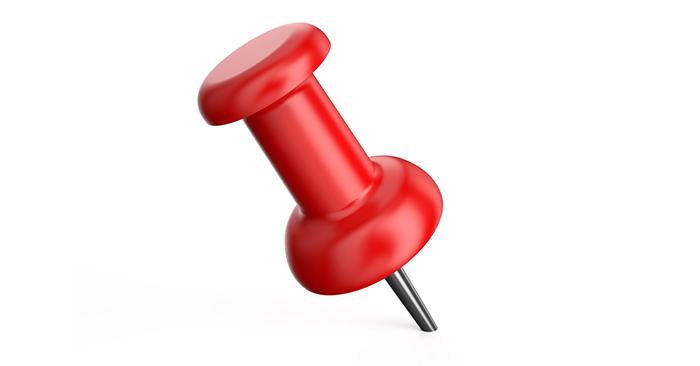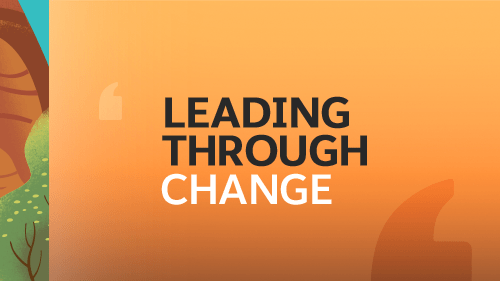
This article by John Rampton is part of our Blogtober event, which features blog posts written by industry influencers in support of Breast Cancer Awareness Month.
Over the past year, Pinterest has been increasing its power as an e-commerce giant. As a shopping platform, it’s overwhelmingly dominated by women, and a significant number of them are among the 20- to 30-year-old demographic. This market share typically does the most amount of shopping, and makes the most household decisions.
In September 2015, Pinterest announced it had 100 million monthly active users, many of whom use the site to swap recipes and beauty tips, comparison-shop scarves and electronics, create wish-lists, pick up some home décor hacks, and more.
As a result of its product and inspiration-driven mandate, Pinterest generates 4 times more revenue per click than Twitter and 27% more than Facebook. These numbers are bound to increase, which makes it an absolutely crucial platform for companies to be on.
What can entrepreneurs and marketers do to compete in the Pinning game? Here are seven ways to engage with your community and boost sales on Pinterest.
Use Images Effectively
As with anything that picks up speed online, there’s extremely convincing data behind the most pin-worthy photos. Certain features like colour saturation, aspect ratio, brightness and darkness, colour dominance, and background have huge effect on how often images are repinned. Curalate, a visual commerce platform, put together a highly useful and data-driven infographic on effective images after they examined over 500,000 images pinned by brands.
Their findings revealed:
- Images with medium-lightness are repinned 20 times more than very dark images.
- Images that are 50% saturated have 10 times more repins than very desaturated images.
- Images that feature faces receive 23% fewer repins than images without faces.
- Colorful photos have 3.25 times more repins than single dominant color images
- Images that feature reddish-orange colors receive twice as many repins than blue images.
To maximize the effect of your pins, integrate these data-backed image details. As for captions, Pinterest descriptions between 100 and 200 characters are repinned the most often.
Create a Culture or a Lifestyle
Pinterest is an extremely effective sales and marketing tool because it is a platform that is centered on selling lifestyles. It fills users’ screens with beautiful, pleasurable images that support these lifestyles. So the best kind of Pinterest ecommerce site doesn’t just sell products: It sells a lifestyle. That means giving the products some context in presentation, creating boards that communicate a certain aesthetic, and engaging people who fit or promote that aesthetic in their daily life.

An independent fashion designer, for example, can set up a board full of curated inspirations for their looks and host guest pinners from fashion or design backgrounds. By creating a visual frame of reference around the products, one that involves all aspect of lifestyle, a company makes a more compelling reason for customers to not simply buy a product, but become a loyal fan.
Integrate Products into Tutorials and Guides
Pinterest’s most-pinned and most-browsed categories include Home Décor, Arts and Crafts, Style and Fashion, and Food, which indicates that the majority of Pinterest users (made up of 85% women) are mostly on Pinterest for ideas on new recipes, crafts, and home décor. In fact, tutorials, guides, do-it-yourself projects (DIY), and recipe pins have 42% higher click-through rates than other pins.
For your business to capitalize on this increase of traffic and repins, publish interesting tutorials and guides on your Pinterest; after all, people respond better to good ideas than to simple products. Recipes, tutorials, and guides can also present a unique opportunity to sell more if your guide involves more products that you offer.
For example, if you are a gourmet food producer, you can publish a recipe with a few ingredients that you keep in stock. A fashion retailer could publish a “How To Wear” guide featuring one of its garments and some of its best-selling accessories.
I personally use Pinterest for customer service at my company, Due. Some of our customers relate better to the network, and Pinterest has proven to be a valuable customer-service tool for us.
Pay Attention to the Seasons
Much like department stores that begin to sell Valentines Day cards and merchandise on the heels of Christmas, so do Pinterest trends fall prey to the overwhelming influence of seasons. There are more than 176 million Halloween pins and more than 45 million Halloween boards. We all know what a boon the winter holidays can be for shopping. From holiday party ideas to gifts, travel and recipe ideas, the Yuletide season accounts for more than 604 million holiday pins and 244 gift-related pins.

Of course, beyond seasonal holidays are simply seasonal trends. According to Ahalogy, hairstyle and hairstyle inspiration pins peak in popularity in the summer, while skin concerns occur during the late fall through the winter months. The term “dress” is searched most in December and January, and athletic tights are searched 1.5 times more often in winter and spring than the rest of the year. Diet content starts to trend in August and maintains popularity through February.
Create a Helpful Blog Featuring Tons of Pinnable Images
Etsy, a Pinterest champion and continual behemoth in ecommerce, is miles ahead of any other company in terms of repins. A study reveals that 67% of Etsy pins come from the Pinterest bookmarklet and 8% of Etsy pins come from the Pin It buttons. This indicates that the lifestyles they promote—not just on Pinterest, but elsewhere, too—are being shared by everyday visitors and Pinterest users.
Brands can maximize their effect by using their blog to promote aspirational lifestyles. In your blog, create aesthetics that feature highly pinnable images that inspire readers and followers. When they pin your blog posts, they help circulate your brand on their own. And by pairing your blog with Pinterest boards and pin-worthy content, you can benefit from a surge of traffic and deeper brand awareness.
Partner With Influencers or Fuse Communities with Community Boards
One method companies use to build credibility and tap into new audiences on Pinterest is to enlist influential guest pinners to create boards for their brands. Large lifestyle companies like Martha Stewart Living and Williams Sonoma use the site to increase their brand awareness—and showcase Internet-famous individuals—by combining pinboards. While there’s often some kind of compensation, either a financial or a social media deal, that gets struck between more popular brands, companies can also achieve a personal connection with wider audiences by joining group boards, which have up to tens of thousands of contributors.

Don’t Forget Rich Pins!
Rich pins can help add context to your product pins. There five available rich pins:
- Product Rich Pins
- Recipe Rich Pins
- Article Rich Pins
- Movie Rich Pins
- Place Rich Pins
These pins are particularly helpful for product pins, and include information like real-time pricing, availability (so pinners can know whether or not the product is in stock), and where to buy. Now that Pinterest has unrolled its Buy button, this process is much simpler, but the Rich Pins certainly help bring customers back to your website to keep browsing.
Pinterest is a uniquely valuable social media tool for companies. Using these tips, you can reap the benefits of using the site by increasing your bottom line and brand awareness.
John Rampton is the founder of Palo Alto, California-based Due, a free online invoicing company specializing in helping businesses bill their clients easily online. You can connect with him @johnrampton.
Like what you read? Please consider donating to the Canadian Breast Cancer Foundation and sharing this article. http://www.cbcf.org/ontario/GetInvolved/Donate/Pages/default.aspx



